Interior wood cladding has gone in and out of fashion over the years, but there’s no doubt that wood wall paneling adds texture and durability to your home. It offers an alternative to drywall that’s resistant to moisture, stains, and damage. This guide will help you explore different wood options, materials, and installation methods so you can decide if the popular interior finish is right for your space.
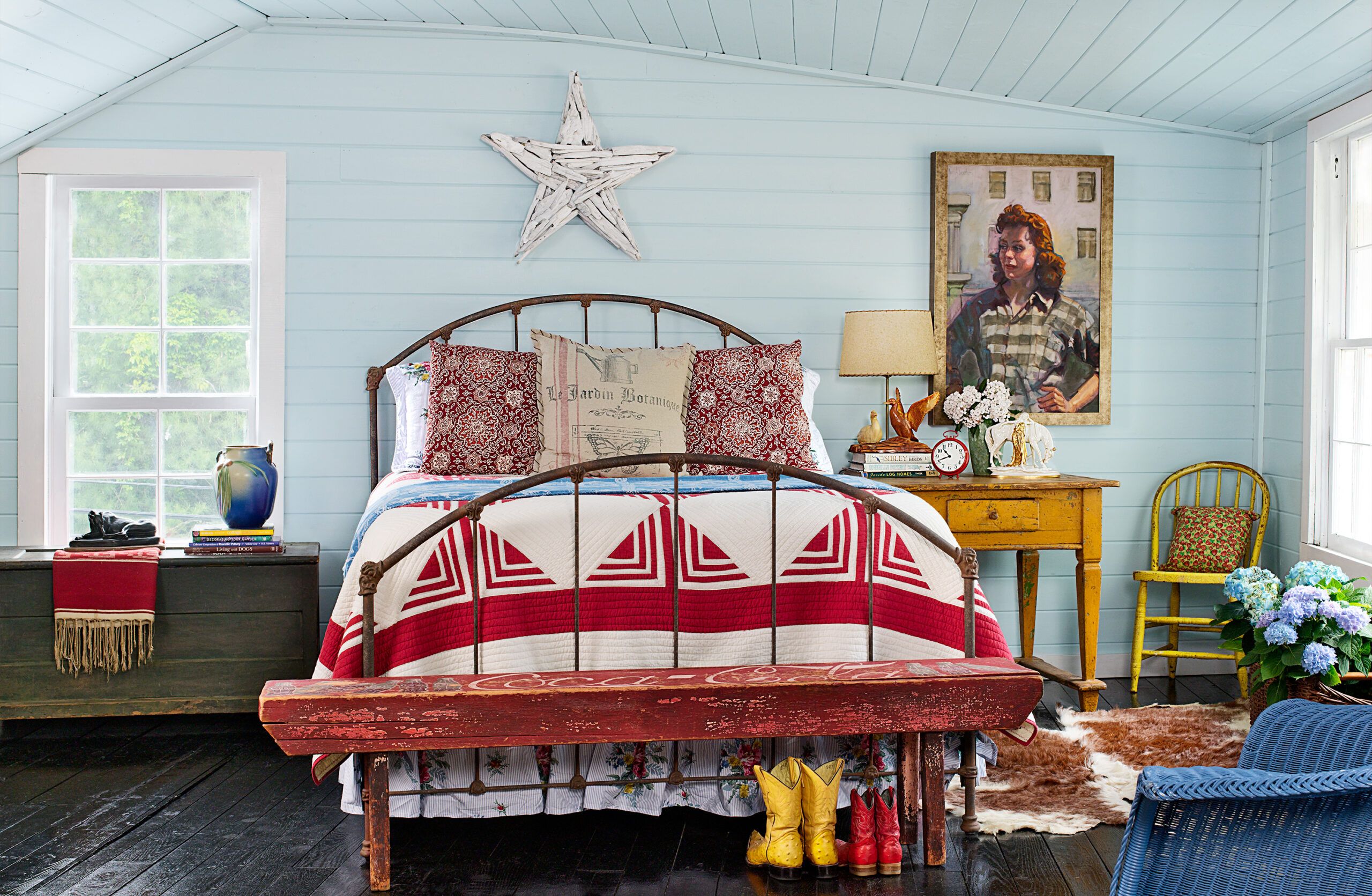
What Is Interior Wall Cladding?
Interior wall cladding is the process of applying a layer of material—in this case, wood—to the interior walls of a building. You can use this method to cover existing drywall, plaster, or even concrete surfaces. Wood cladding offers a way to change the look and feel of a space without a full renovation.
Along with the updated look, wood paneling adds insulation, hides imperfections, and resists dents and scratches. It’s also great for mounting shelves or artwork.
Interior Wall Paneling Cost
The cost of wood paneling can vary widely depending on the materials and installation method chosen. The cost of installing wood paneling ranges from $1–$40* per square foot, with an average of $20 per square foot. Budget-friendly materials such as pine or medium-density fiberboard (MDF) are on the lower end, while premium hardwoods or reclaimed wood are typically much more expensive.
You can find wood paneling for your home at most home improvement stores. Home centers sell a variety of manufactured wood and MDF products, sometimes as kits. You’ll find higher-quality wood cladding at lumberyards, though it may be a special order.
*Cost information is based on 2024 data from Angi.
Types of Interior Wood Paneling
Several popular paneling styles give your walls a distinct look. Here’s a breakdown of the most common options.
Shiplap
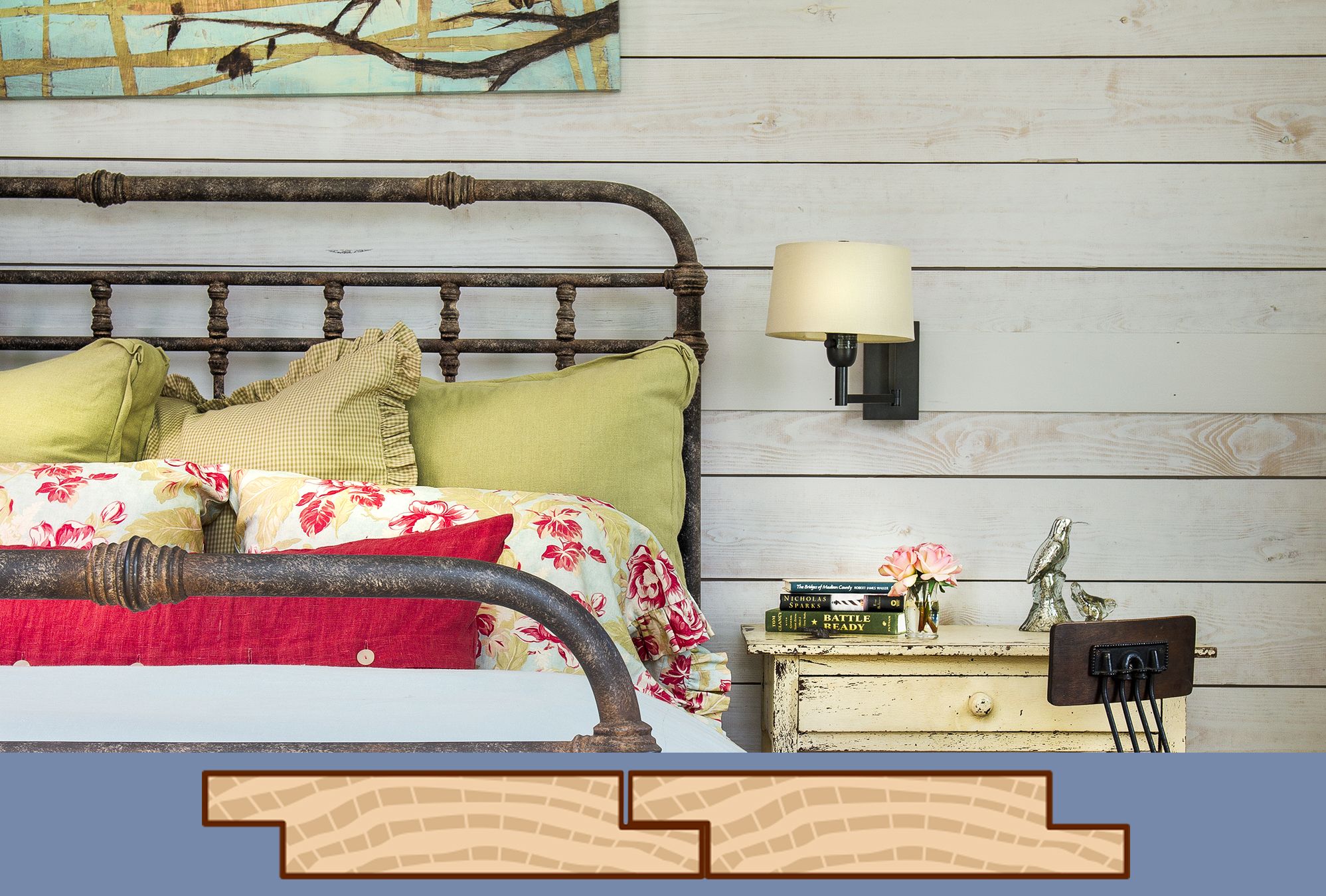
Shiplap actually refers to a type of joint rather than a decorative cladding treatment, but interior designers use the term to denote a distinctive type of wood paneling. To create shiplap, horizontally laid boards are rabbeted along their sides to interlock for a tight seal. The long boards highlight the amount of space in a room and can make it appear larger. Shiplap is popular for offering a coastal, farmhouse, or even modern vibe.
Today, it’s common to have shiplap boards milled with a “nickel gap” of about 1⁄8 inch along the top edge to create a shadow line that highlights the individual boards. DIYers often install lauan plywood or MDF strips on the wall with space in between to get the look of shiplap with much less time and effort to install.
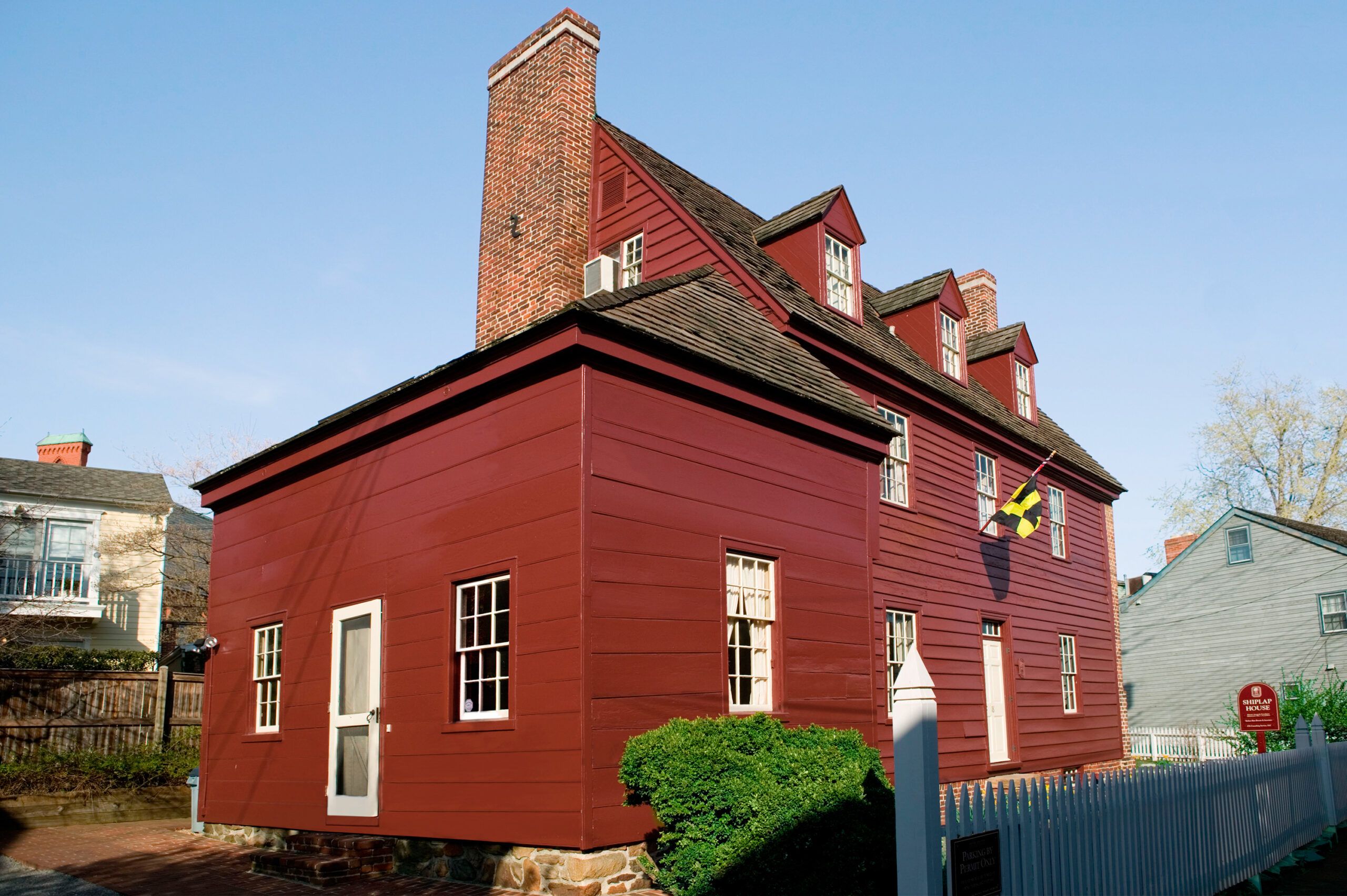
The historic “Shiplap House,” so named for this 1815 shed addition to an early 18th-century house in Annapolis, Maryland, showcases a well-preserved historical example of the flush and flat-backed siding. At the time, clapboards with beveled profiles designed to shed water were the norm. Shiplap boards have interlocking lapped joints along their edges to seal out the weather.
Beadboard

Beadboard paneling has narrow planks with a decorative bead along the edge. It’s traditionally “stick built” and uses 2 1/2-inch-wide strips of wood with a beaded edge milled along the tongue side and a matching rounded (or a chamfered) edge on the groove side to hide the joint. These are installed vertically and fit together to form one continuous wall covering.
Today, wider planks with multiple beads and plywood or MDF sheets with rows of beads milled to replicate the look without the installation time. Beadboard is perfect for adding a charming, vintage feel and is often installed as wainscotting, offering walls extra protection from scuffing.
V-Groove
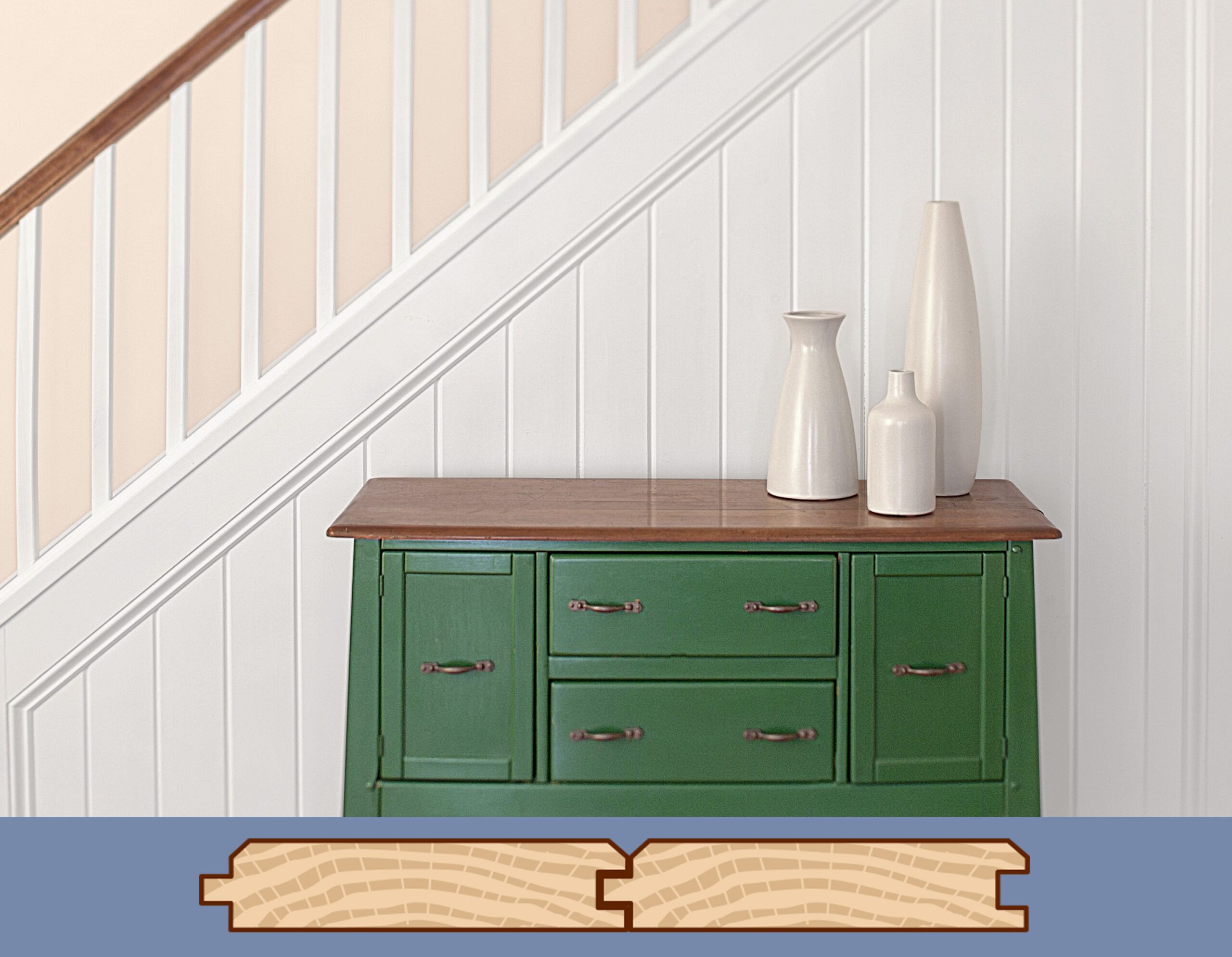
V-groove boards have chamfered edges on both sides, forming a V shape when the tongue-and-groove or shiplap joints come together. V-groove planks in varying widths were a common wall cladding in colonial-era homes, often paired with a matte paint finish.
Like square-edged shiplap, V-groove boards are prized for their modern simplicity. V-groove boards are available in wood, MDF, and synthetic materials for different applications.
Board and Batten
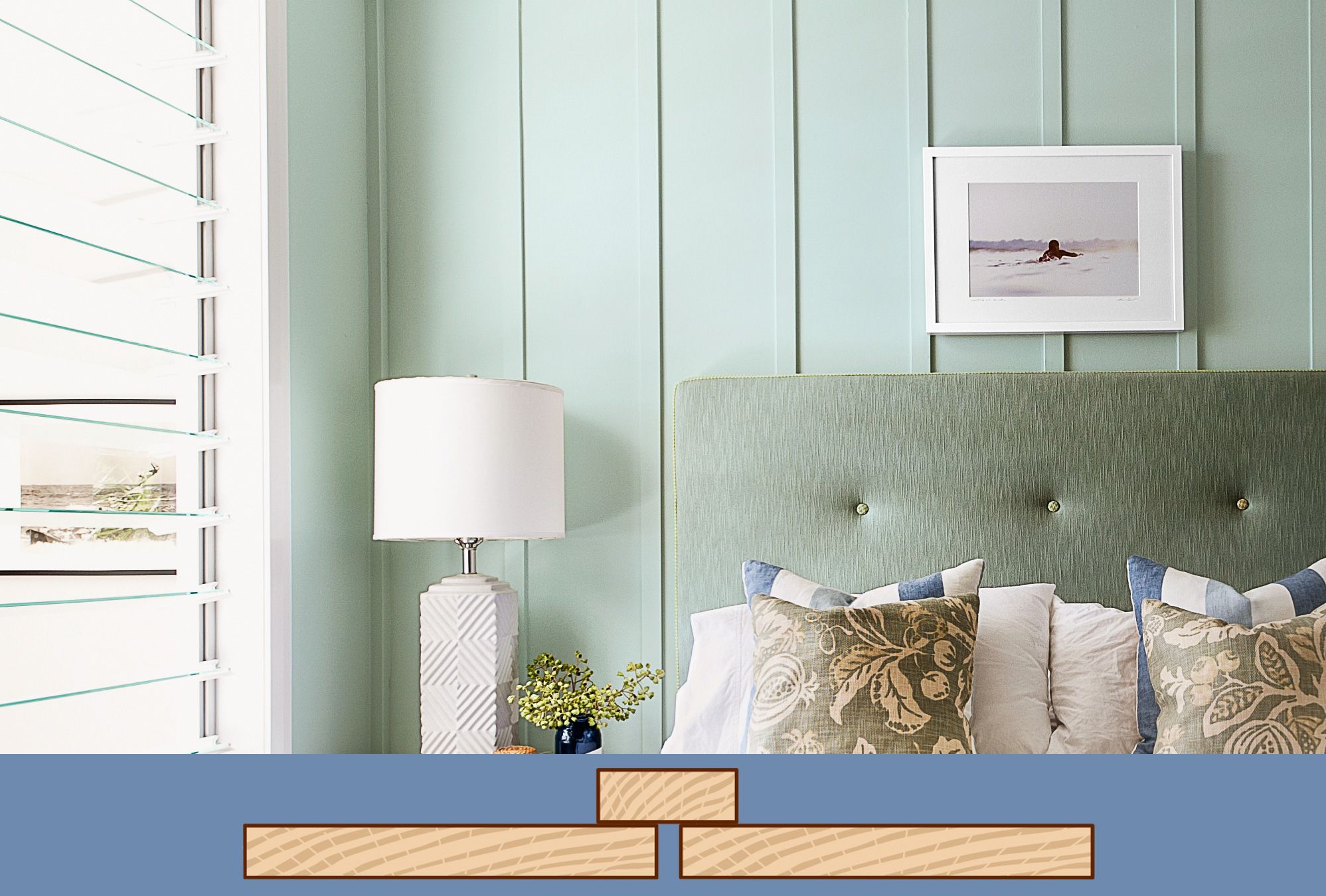
Board and batten is traditionally a series of vertical boards overlaid with strips of 1x material, or battens, covering the joints. When it’s used as exterior siding, the lumber is often rough cut. Interior panels are usually smoothed and primed. Board and batten is a favorite for farmhouse and rustic interiors.
Drop Siding
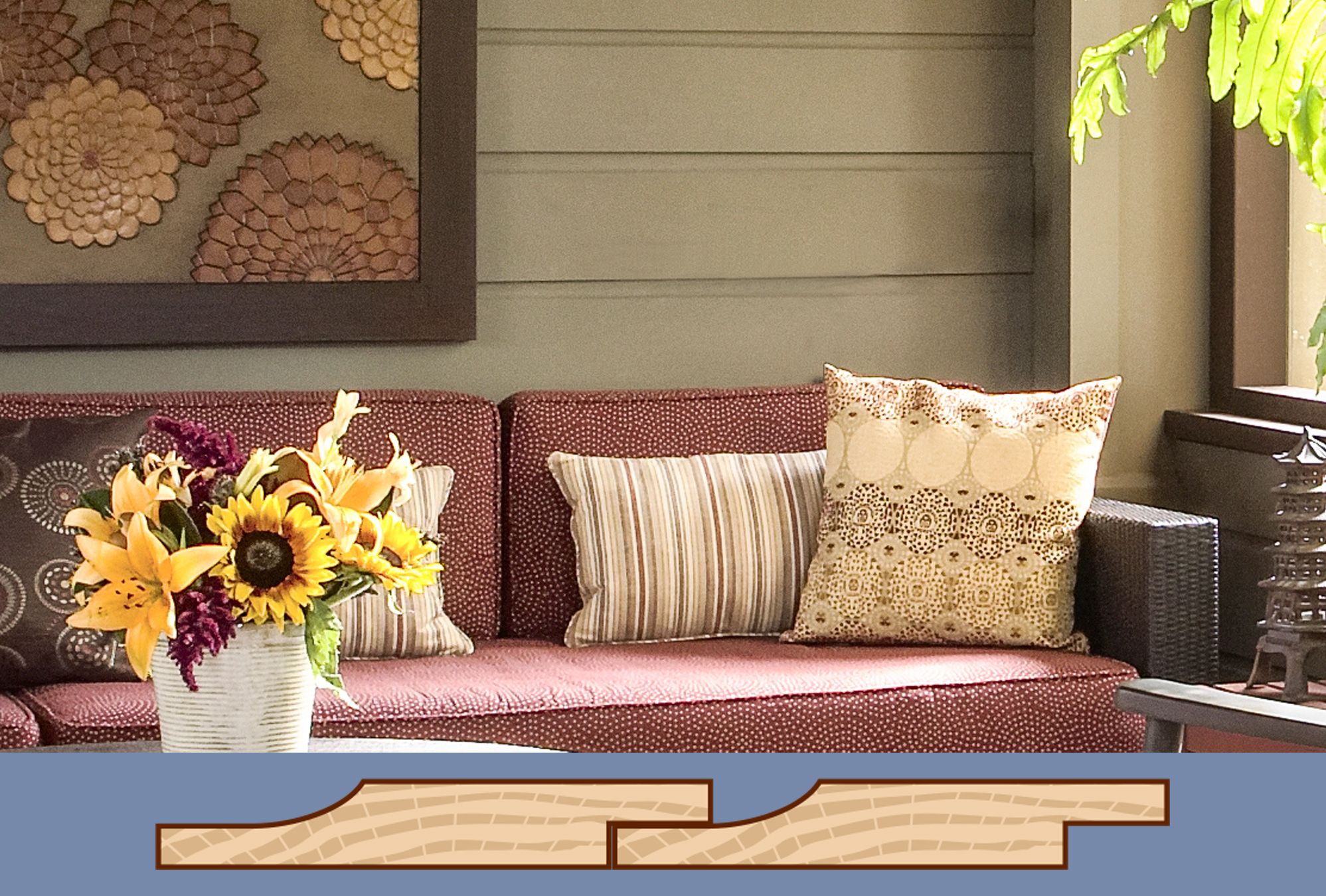
Drop siding, also called Dutch lap or German lap, is a historical type of horizontal shiplap typically featuring a cove along the top of the board to encourage water shedding. If you were to square off that concave curve, you’d have channel siding.
Because it’s a flat-backed siding and not beveled as seen in styles such as clapboards, drop siding is great for interior use. Millwork shops can add a bead along the bottom or any other custom details that you like.
Rustic Planking
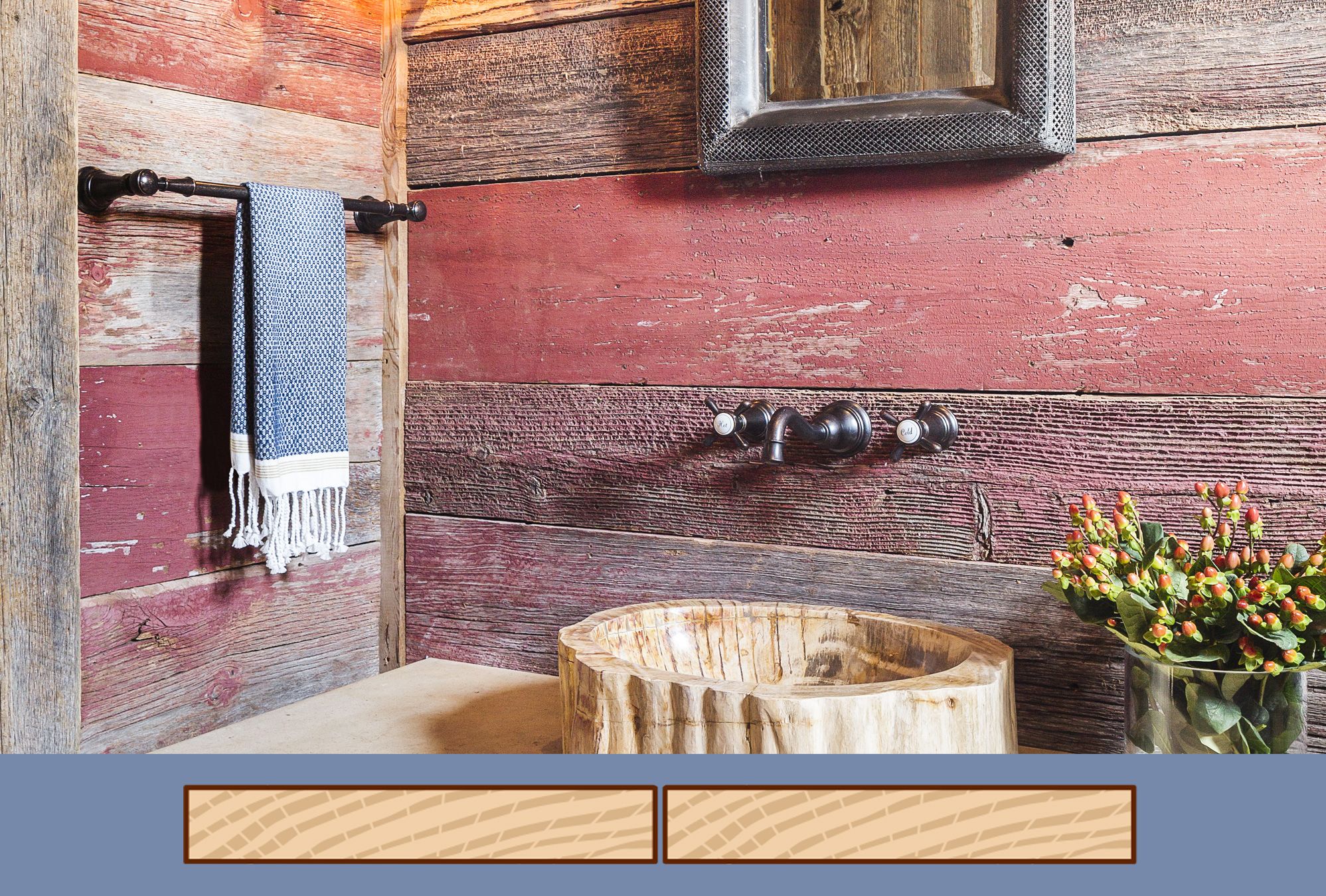
Perfect for accent walls, rustic planking uses wood with natural textures and imperfections—think reclaimed barn wood or weathered finishes. You can nail up the planks with little to no space end-to-end but stagger the joints to match the rustic look.
Keep in mind that rustic boards may not have milled edges to conceal gaps and will need space for expansion. Painting the wall black before installing this paneling helps keep another color from showing through.
Different Wood Paneling Materials
While all the above siding was traditionally made of wood, modern siding is manufactured using different natural and synthetic materials to fit various styles and budgets.
Wood and Plywood
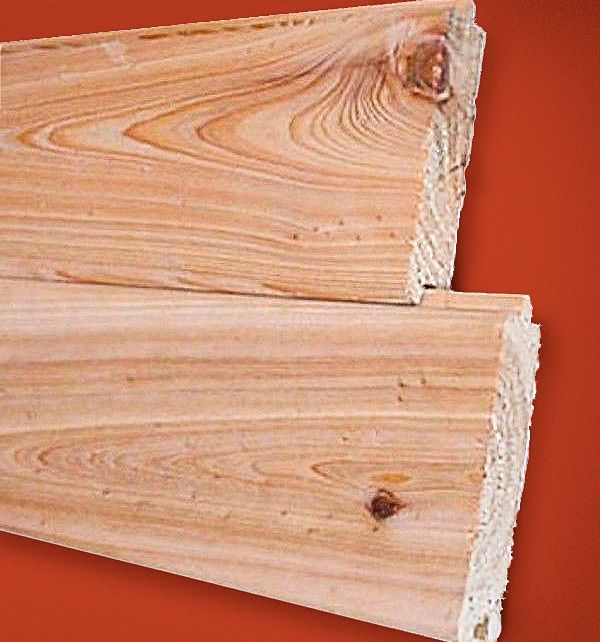
You can find solid wood tongue-and-groove or shiplap boards in a range of species, from budget-friendly pine and poplar to pricier woods like redwood, cedar, and cypress. Since wood expands and contracts over time, install it with room for it to move.
Solid wood can be heavier than its manufactured counterparts, so it needs proper fastening and likely another pair of hands to install. This makes solid wood less DIY-friendly than other options. However, thin plywood sheets milled with bead or V details and lap joints at the ends are more stable, less pricey, and quicker to install.
Finishing Tips
Ask for stain-grade clear wood that’s smooth and free of knots for the best paint job or for staining. Otherwise, knots need to be filled, sanded, and primed before painting. You can leave wood bare, but it will be susceptible to dirt and stains. A coat of water-based polyurethane or wax helps protect it while highlighting its natural color.
Salvaged Wood
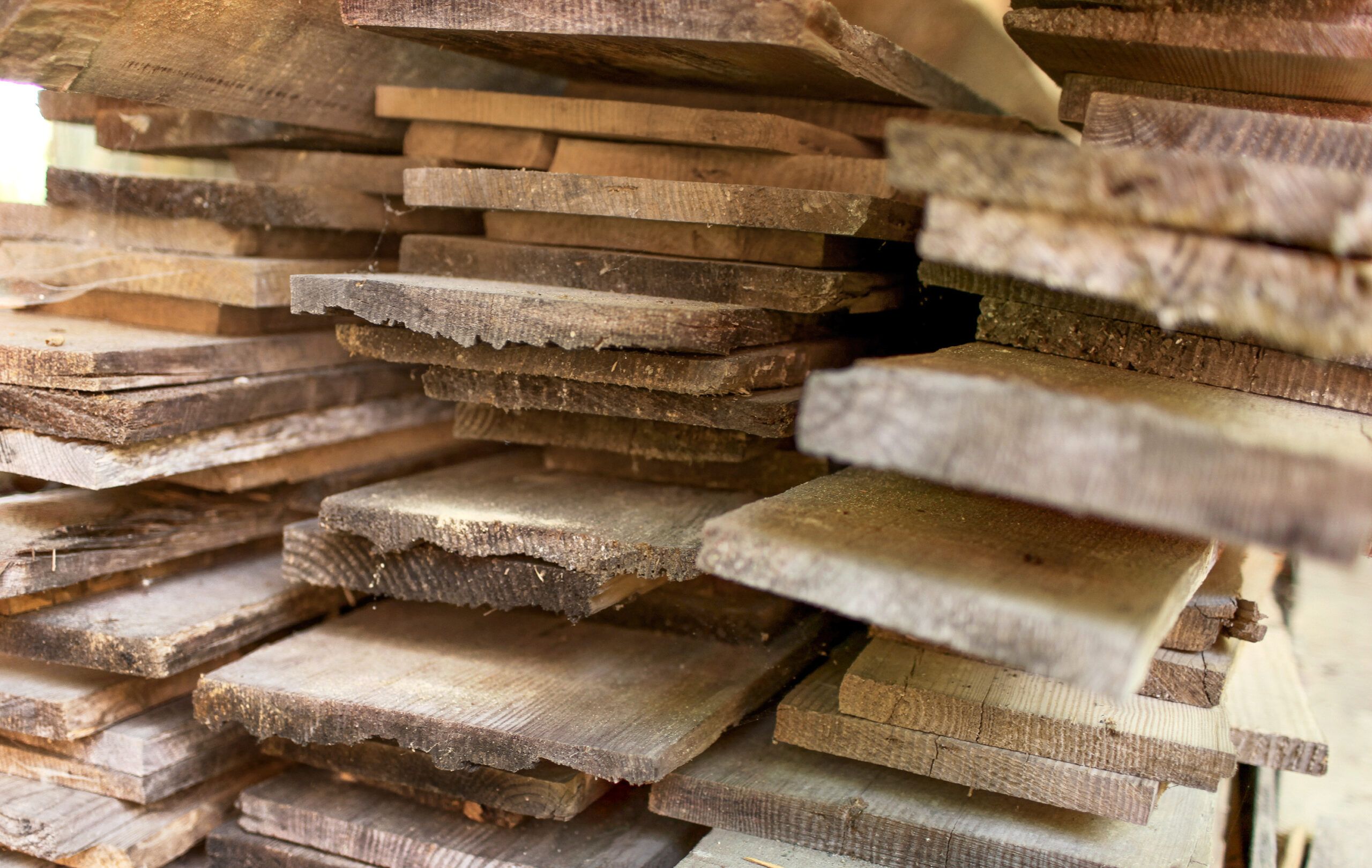
Reclaimed boards can be prefinished or milled into any style of wall cladding you want. Whether rescued from old barns or factory floors, you’ll find reclaimed wood boards in a variety of species and dimensions. The wood is unmatched in character and saves trees from being cut down, but it won’t always be in ready-to-use condition. You need to clean and plane salvaged boards so they lie flat on the wall. Ideally, they’ll also be kiln-dried by the dealer—otherwise, they may warp. Kiln-drying also eliminates any insects hiding inside.
Finishing Tips
Reclaimed wood is a good candidate for a distressed or weathered paint finish, or a stain that doesn’t completely hide the wood grain. Reclaimed wood is often left as-is, but old paint could be lead-based. Make sure to seal it with a water-based polyurethane or shellac.
Fiberboard
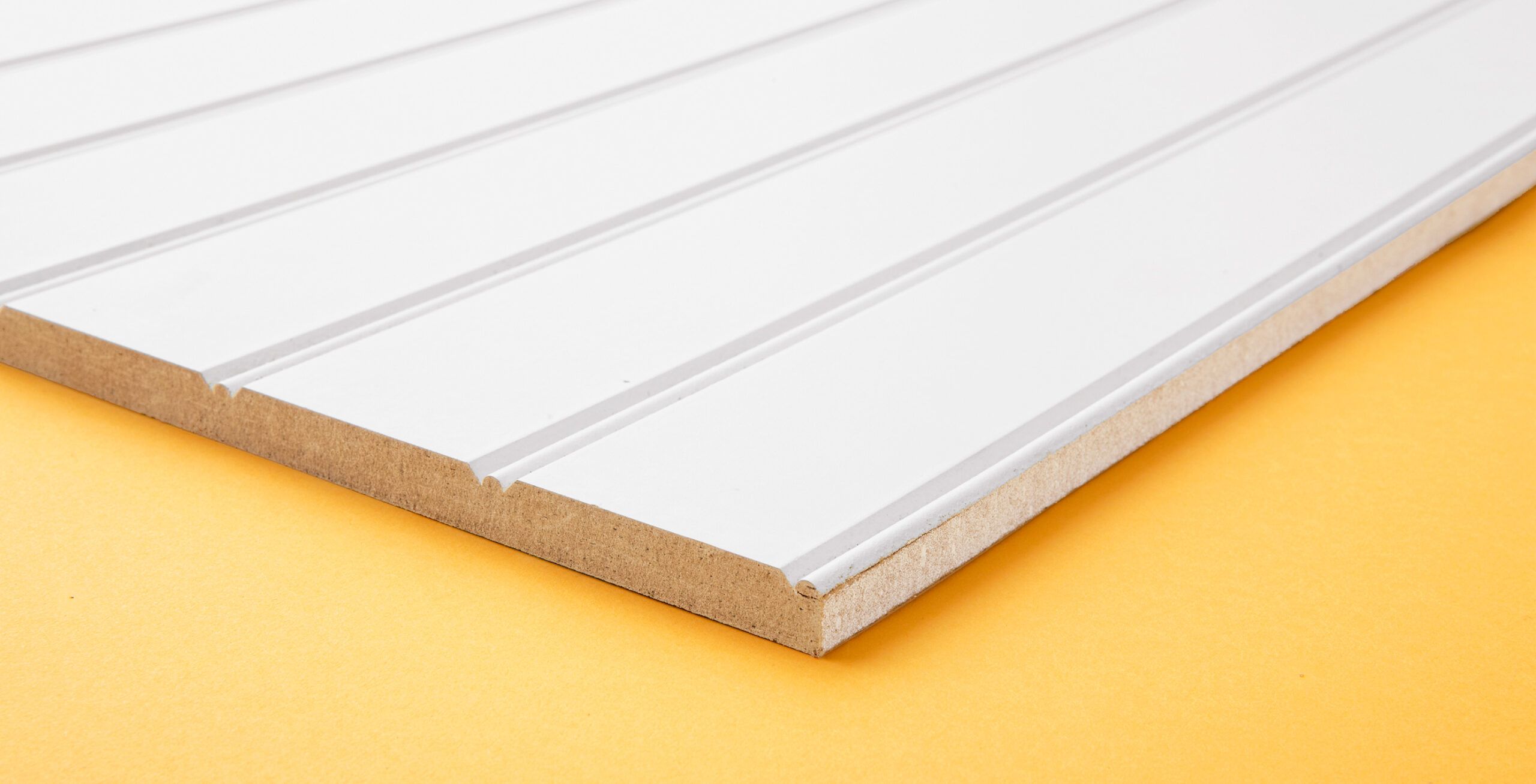
Milled sheets of MDF are popular among DIYers since they’re budget-friendly, and manufacturers can achieve a convincing bead or groove while requiring fewer joins between panels. MDF is also more stable overall than wood during swings in temperature.
Unfortunately, it can soak up moisture like a sponge, swell, and crumble if it gets wet. Some companies offer moisture-resistant MDF for wet-area installations. For wall cladding, MDF is most commonly used as battens or sheets.
Finishing Tips
Smooth MDF takes paint beautifully, and it typically comes pre-primed since you can’t stain it. If you’re priming it yourself, be sure to use a shellac primer on all six sides and pay special attention to any cut edges. Avoid water-based primers, which can cause cut edges to swell.
Interior Wooden Paneling Installation Advice
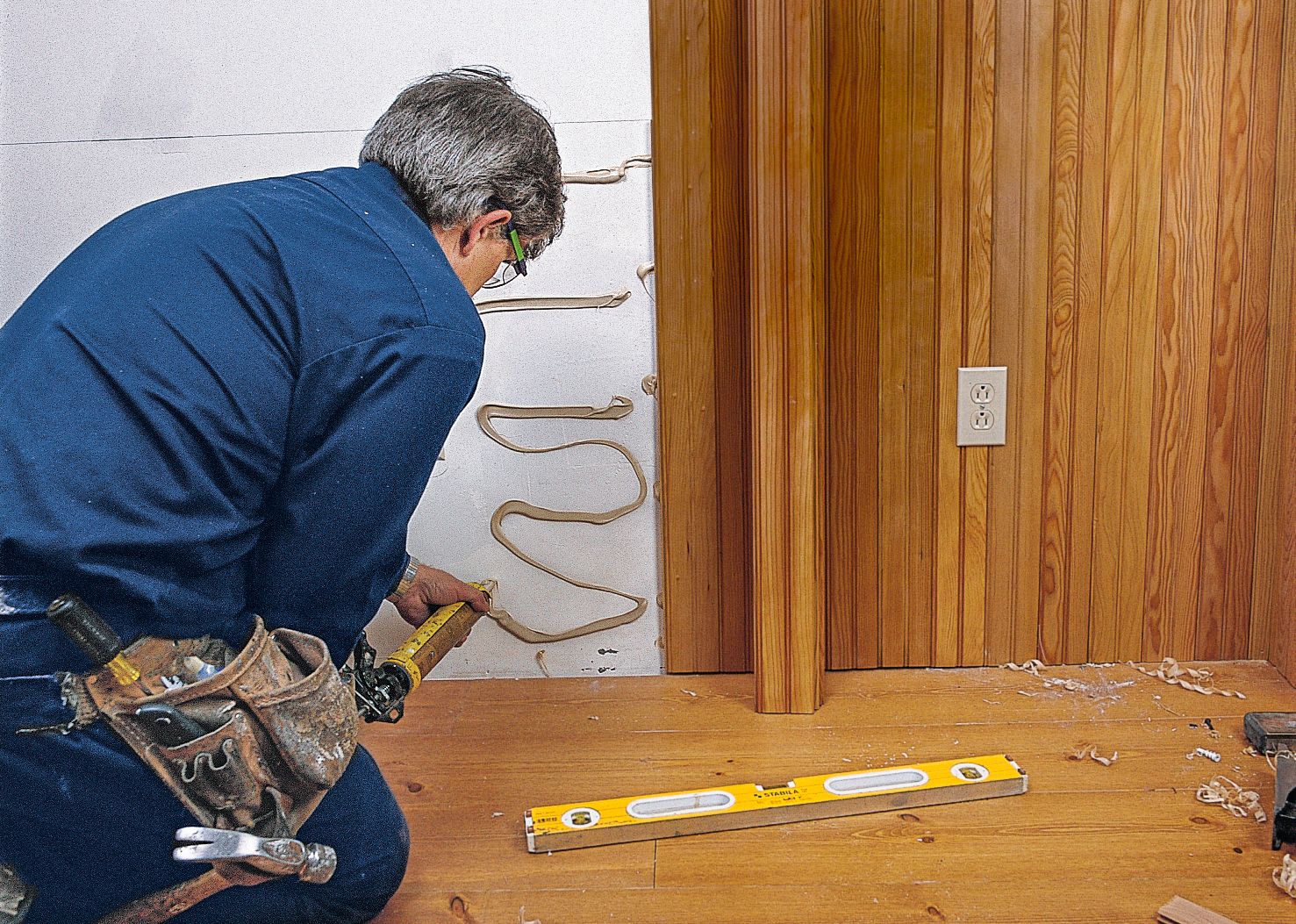
Shown: This Old House general contractor Tom Silva puts up beadboard using high-tack panel adhesive.
Before installing wood paneling on your own, take time to understand the intricacies of the project. Here are some tips to get you started:
- Wall prep: Make sure your walls are clean, dry, and smooth before starting. You might need to use furring strips if the surface is uneven.
- Expansion gaps: Since wood expands and contracts with humidity, leave a 3/8-inch gap around the edges of your paneling.
- Use construction adhesive: Construction adhesive can provide up to 30% of the bond, so you’ll need fewer nails. With lightweight material like MDF, adhesive may be all you need.
- Be patient: Don’t rush installing that first board—if it isn’t level (or plumb), you run the risk of every piece after it being crooked. If the walls aren’t plumb or the floors aren’t level, you may need to scribe the board to fit.
Design Ideas for Wooden Paneling
A wood panel project isn’t all technical specs. Since interior wood cladding doesn’t need to repel rain or stand up to weather damage, the type and size that you pick will mostly depend on your aesthetic preferences. Consider the following style ideas as you imagine your new paneling or wainscoting.
- Go wide: When using shiplap and V-groove, Georgia-based designer Katie DeRario suggests sticking with 10-inch-wide planks so they look more like paneling and less like siding, which is typically narrower. Similarly, with beadboard, she prefers 3–4 inches between beads for a more modern look.
- Exploit optical illusions: As a general rule, running planks vertically adds height visually, while horizontal boards can make small rooms look more expansive. “But it also depends on how you enter the room and what is in your line of sight,” says Massachusetts-based designer Jonathan Raith. That means a typical hallway can look extra-long when lined with horizontal planking.
- Mix and match with caution: With so many styles of cladding to choose from, it’s easy to go overboard. Raith suggests keeping it simple: “I wouldn’t mix more than two in one room, and I wouldn’t do more than three in one house,” he says. “And it’s critical to use them thoughtfully and proportionately in the space.”
- Let hardwood work hard: If you use wall cladding in just one space, a mudroom or a laundry is a great place to put it. “Mudrooms take a lot of wear and tear,” says DeRario. “Kids kick off their shoes and backpacks, and wood walls hold up a lot better than drywall.” Plus, you can install hooks anywhere that’s convenient, rather than planning around the wall studs.
Wet Area Options for Wooden Paneling
When moisture is an issue, you’ll need to give extra thought to materials.
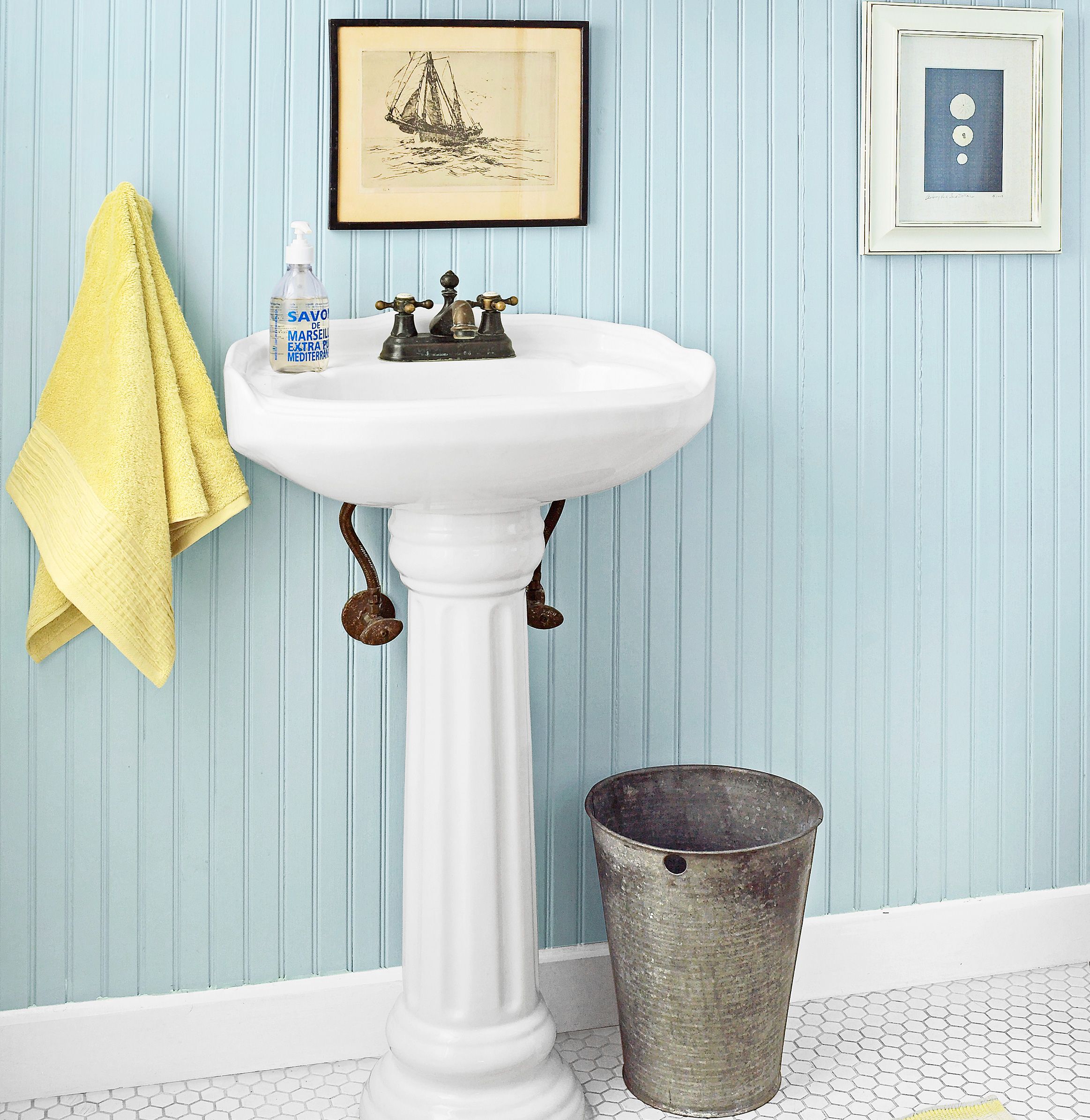
On bathroom or kitchen sink walls, wood planks and plywood sheets stand up to moisture better than standard MDF, which can swell with water. Vinyl beadboard made for wet areas isn’t convincing, though painting it can help. Solid-surface versions made for bath and shower enclosures may be too costly to cover full walls.
While there is water-resistant MDF, This Old House senior technical editor Mark Powers prefers to stick with wood where walls could get wet. “Any wood cladding will fare fine with a coat of paint or water-based polyurethane,” he says.
A product to consider is Westlake’s TruExterior Beadboard siding, made of polymer-bound fly ash. The material is lightweight and easy to work, inexpensive, impervious to water, and doesn’t off-gas. Visit the TruExterior website to find a store that sells it.
DIY Wooden Paneling Made Easier
Off-the-shelf products can save you time, money, and installation headaches. Here are a few to consider.
Prefinished Pine Board
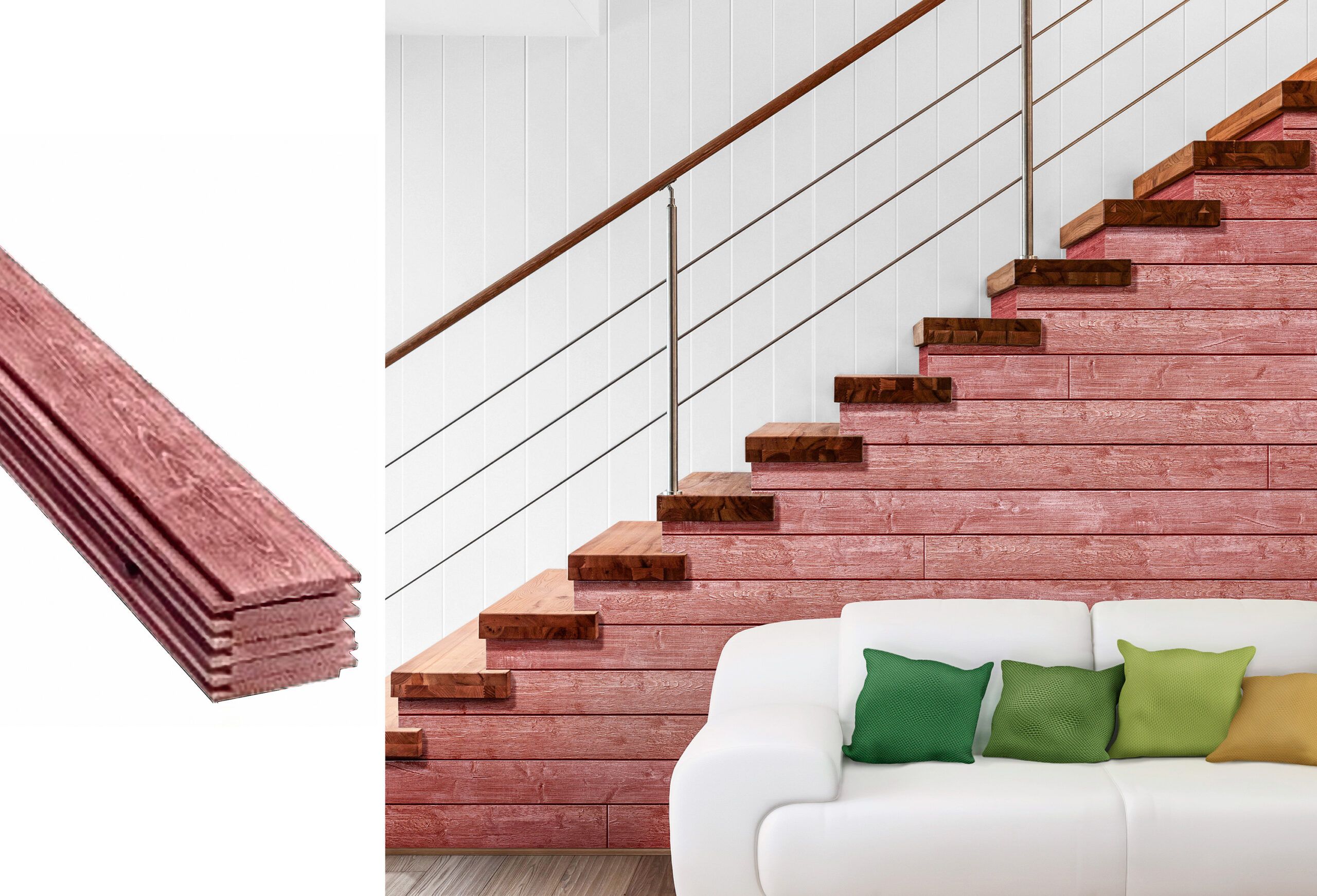
These shiplap boards have a distressed red finish reminiscent of old barn wood. You’ll receive random lengths of 3 3/4-inch red cedar boards, so all that’s left to do is trim them as needed and glue and tack them up.
Shown: American Pacific 3-3/4 inch x Random Length Aromatic Red Cedar Shiplap Planking, The Home Depot
Prefab Panels
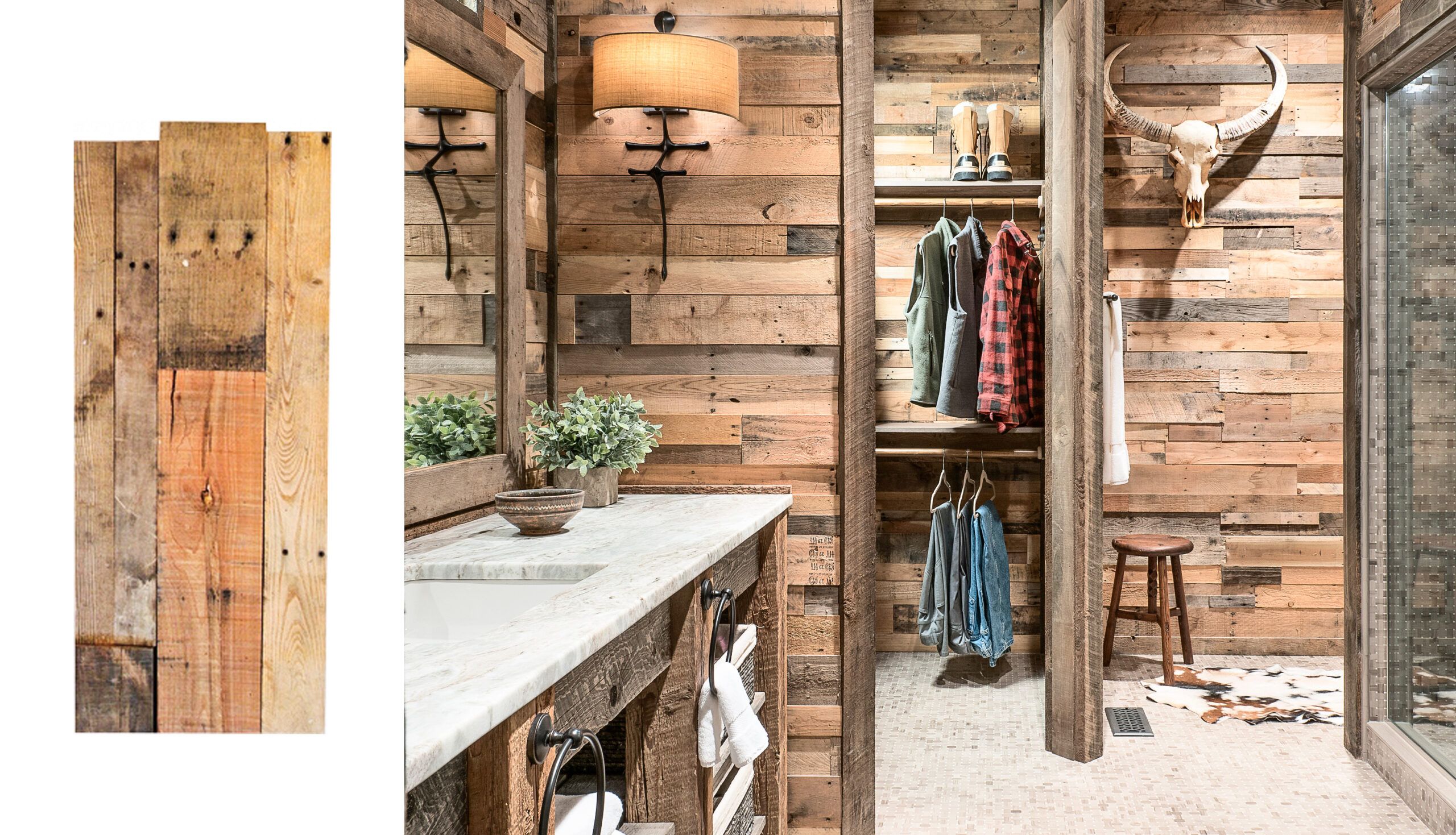
These interlocking reclaimed wood panels can cut installation time by 90%. The maker claims a typical 8-by-10-foot accent wall can go up in about an hour.
Shown: Prefab Wood Wall Panels in All Natural Pallet Wood, Sustainable Lumber Co.
Plank Kits
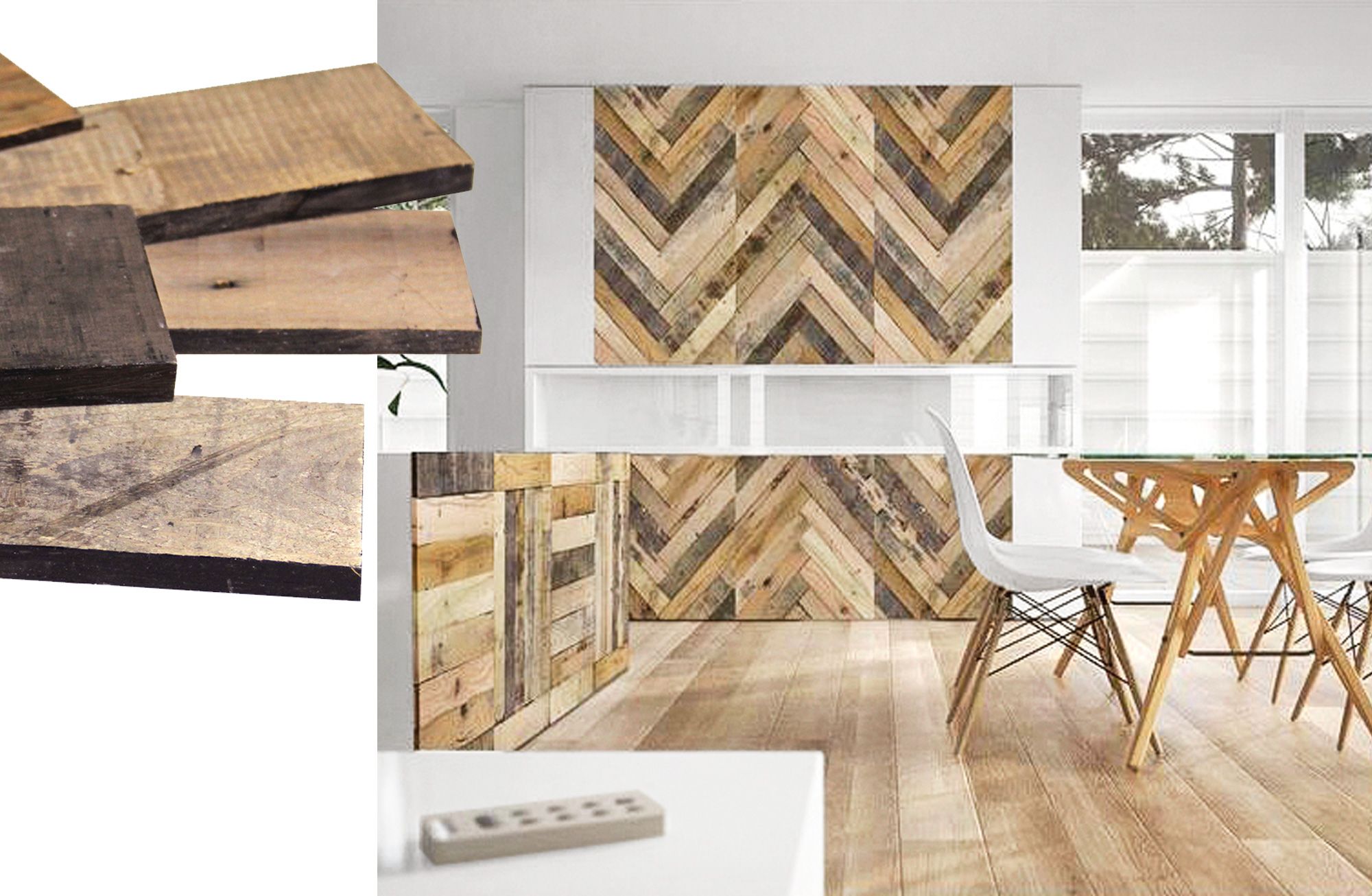
The kiln-dried boards in this kit come in random shades and varying widths with lengths of 4 feet. Each pine plank comes with its own unique markings, without the hassle of prepping salvaged wood.
Shown: Barnline 3/8-inch x 4-foot Multi-Width Multi-Color Kiln Dried Barnwood Kit, The Home Depot
Preprimed Shiplap
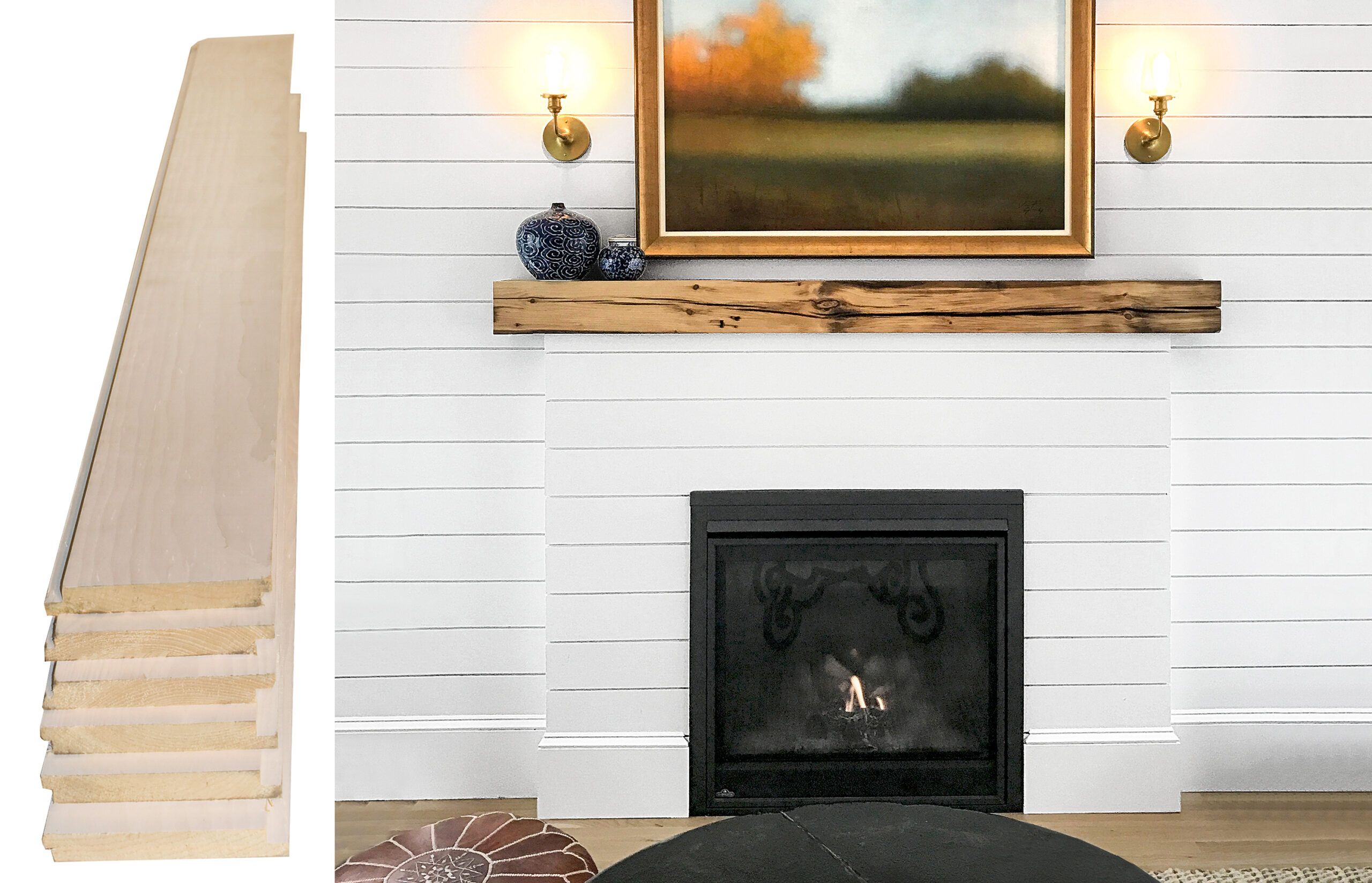
If you plan to paint your cladding in place, primed boards get you there a bit faster. These pine planks have a nickel gap already milled into the joint, so you don’t have to fuss with spacers.
Shown: 1-by-6-inch Shiplap Paneling in Nickel Gap, Stonewood Products
Interior Wall Paneling Design Ideas
For some visual inspiration, check out the designs and products below.
Cottage Appeal
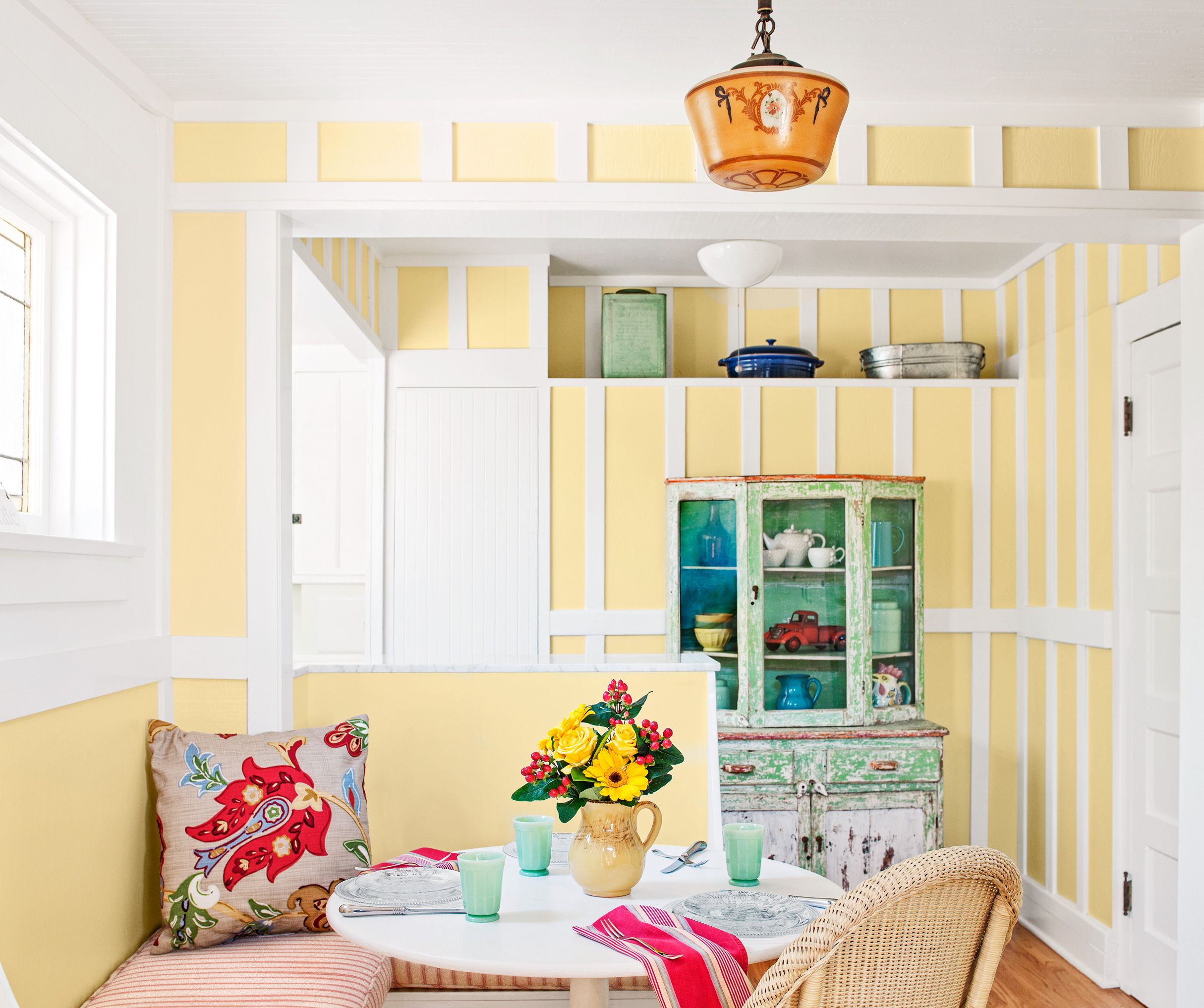
White battens pop against sunny-yellow walls, adding texture and dimension, and accentuating high ceilings. Running a couple of horizontal bands saves them from looking like stripes.
Similar to shown: Whitewood Board, Lowe’s
Bold Accent
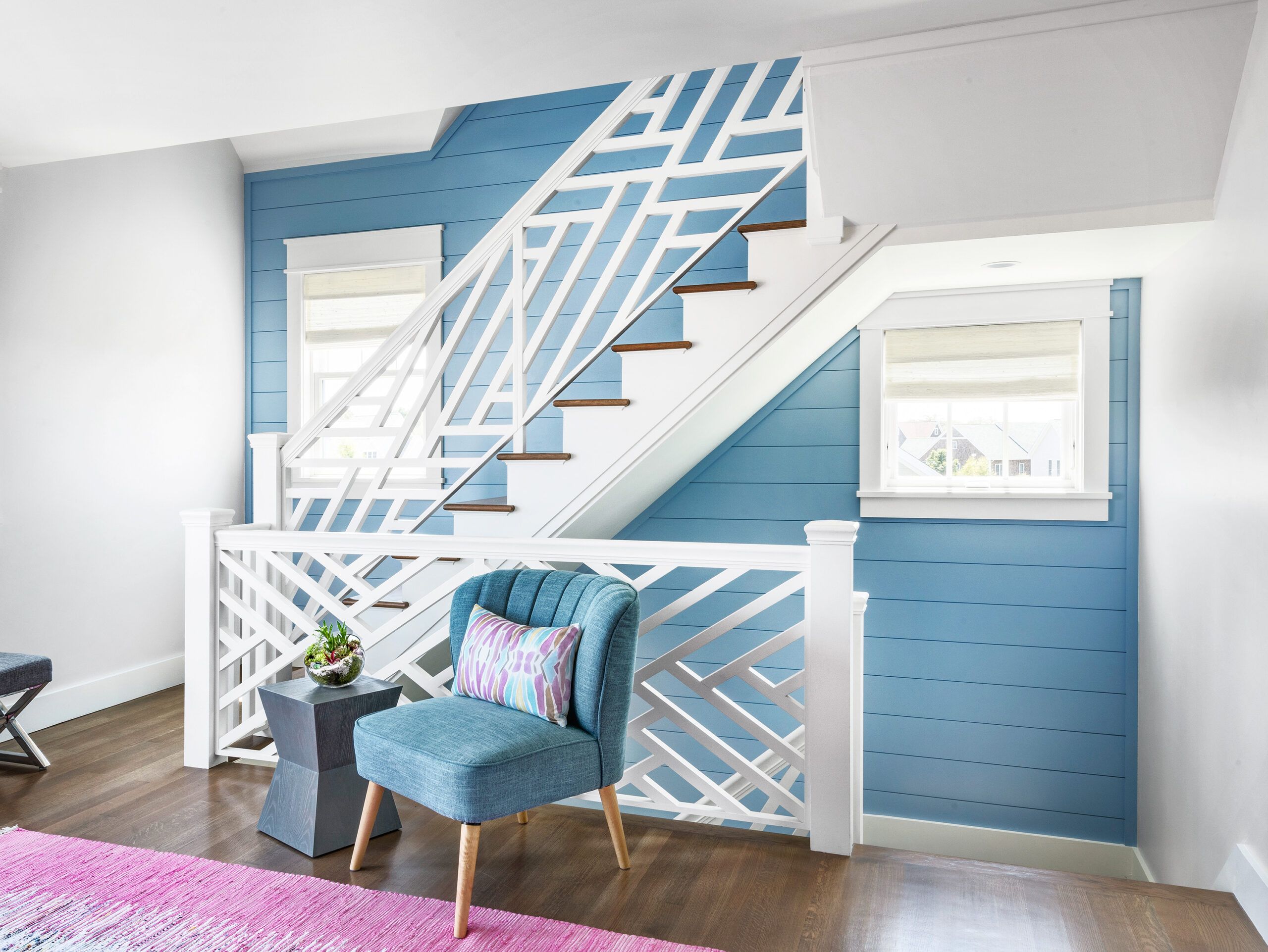
This feature wall of custom-milled nickel-gap shiplap packs a lot of design punch. Though shiplap is often considered rustic, bright blue paint and sleek furnishings make it feel modern.
Similar to shown: Arauco Primed Pine Nickel Gap Ship Lap Board, The Home Depot
Aged Patina
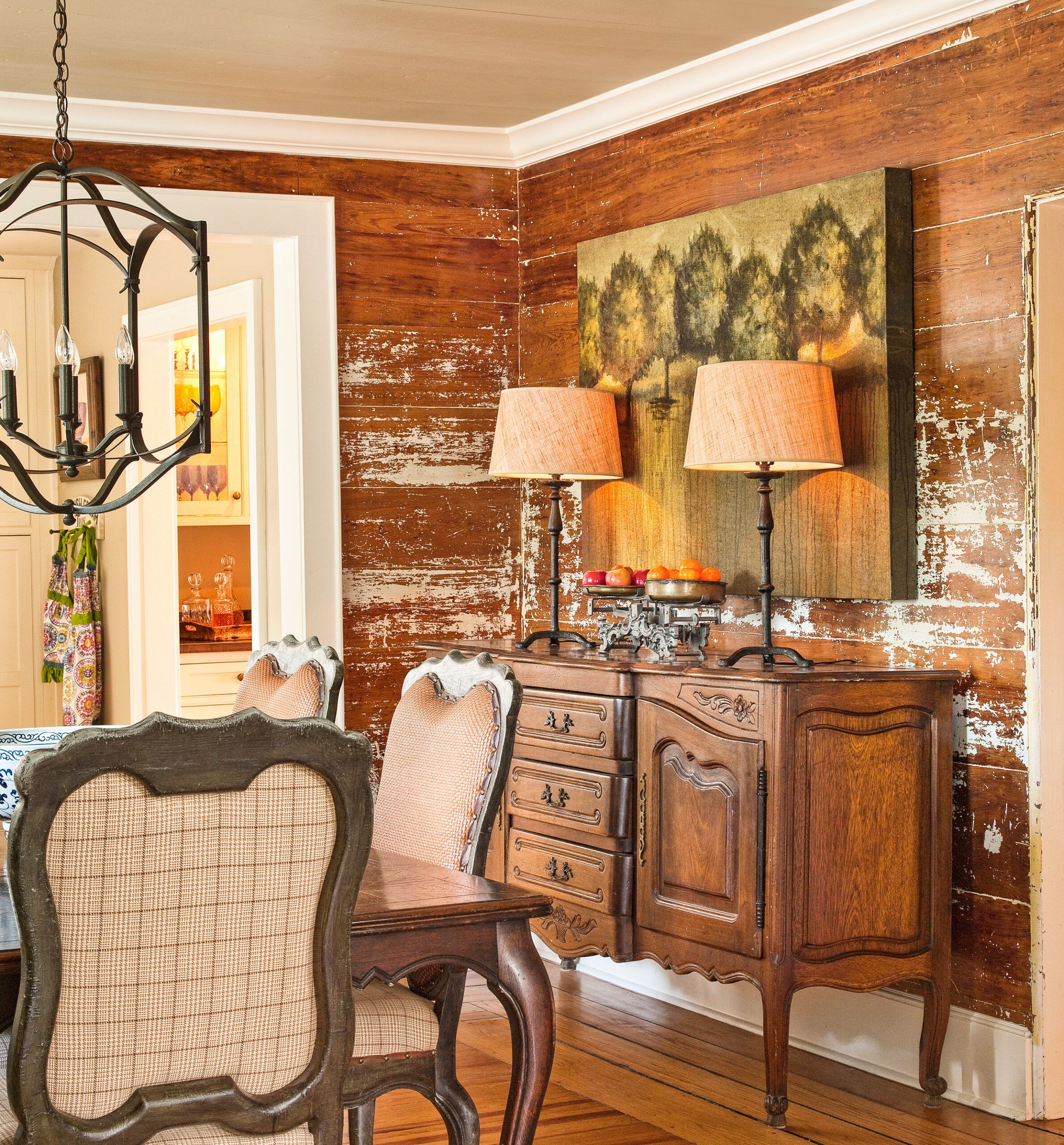
This finish was a happy accident—the homeowners regretted painting the natural cypress planks, and started scraping with a putty knife. They liked the distressed look so much that they added glaze to give it depth.
Similar to shown: Cypress Tiger Smooth Natural 2.0, 1-by-8-inch boards in random lengths, Delta Millworks
Refined Pine
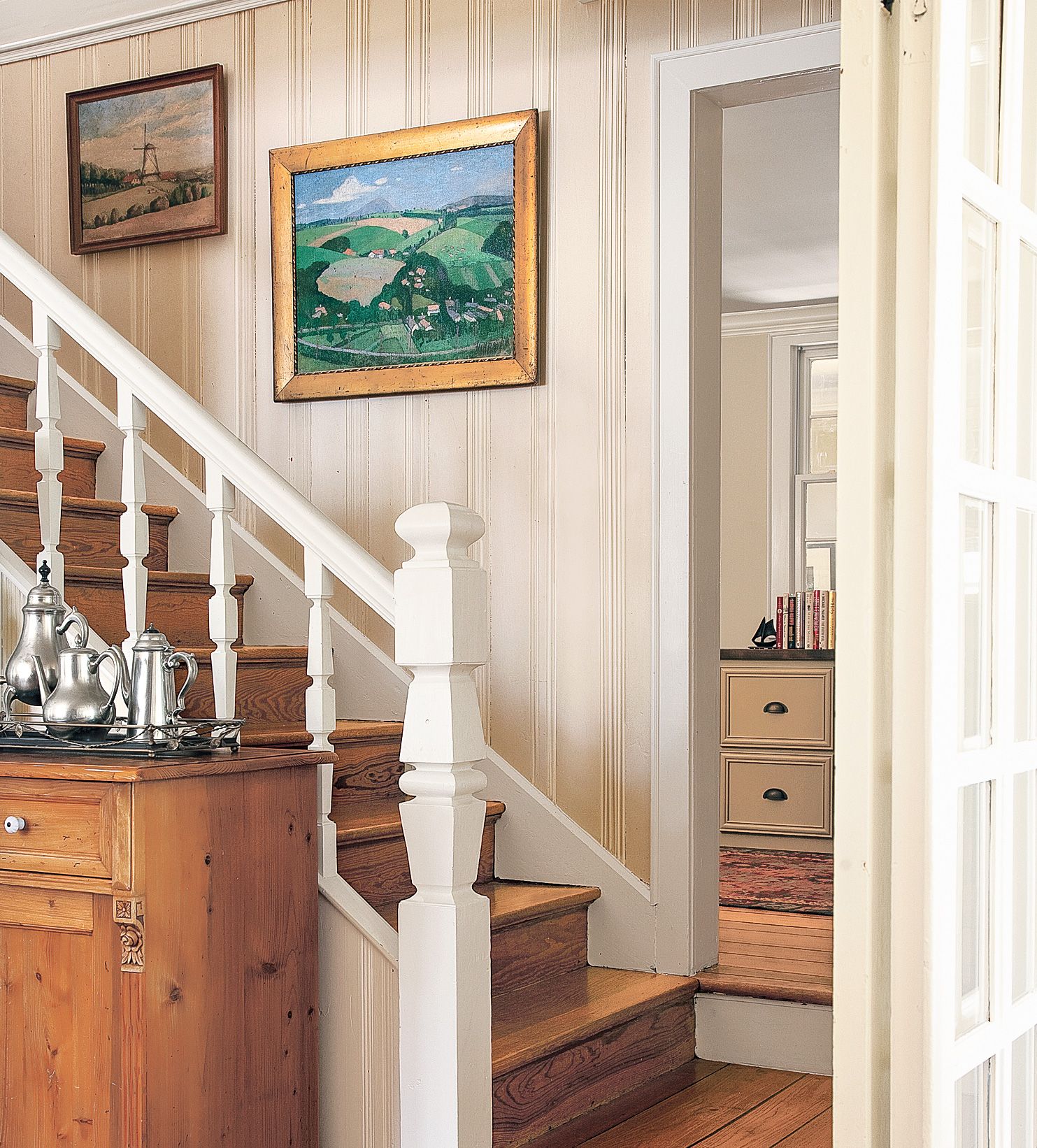
Tongue-and-groove boards milled with two beads flanking a cove detail go from knotty to natty with a warm, neutral paint job.
Similar to shown: 3⁄4-inch-thick Pickwick Tongue-and-Groove Premium Pine, Stonewood Products
Sleek Look
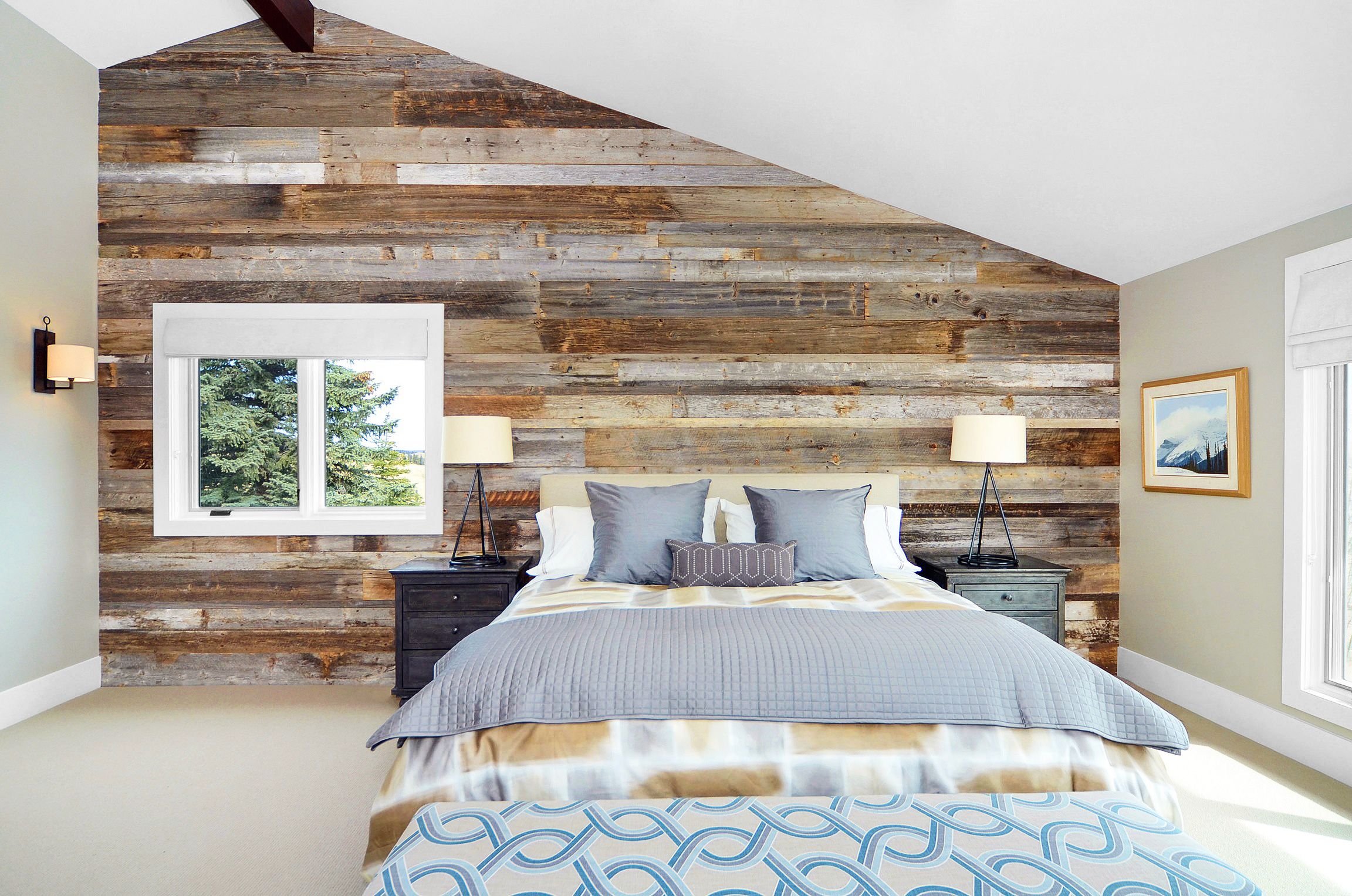
A smooth face gives reclaimed planks a more sophisticated finish, as do cool colors like gray and blue. Using them on one wall creates an eye-catching focal point.
Similar to shown: Reclaimed barn wood, Salvage Solutions
Ceiling Upgrade
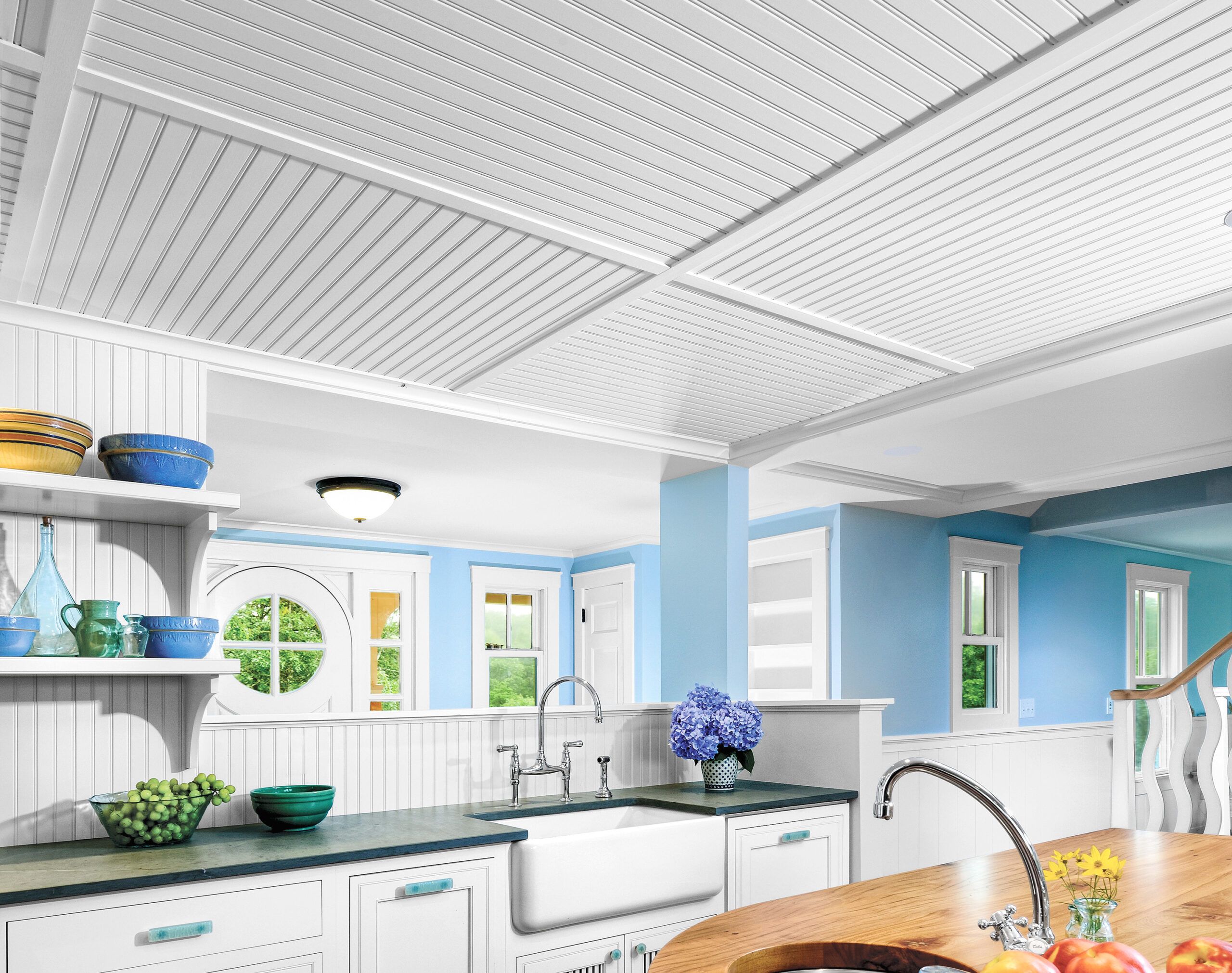
Extending beadboard onto the ceiling and alternating its direction in squares adds architectural interest. Battens covering the seams create a pleasing panel pattern.
Similar to shown: Eucatile Beadboard White True Bead Panel, The Home Depot
Maintenance and Care for Wood Paneling
As long as you’ve installed the wood cladding properly with sufficient room for expansion, it should last the life of the house. MDF may be more susceptible to dings and moisture damage.
Add regular dusting and occasional cleaning with a damp cloth to your to-do list. Avoid using harsh chemicals or excessive water, which can damage the wood or finish. Over time, wood paneling may need refinishing to maintain its appearance. This can involve light sanding and reapplying stain or paint. You can typically repair minor damages with wood filler and touch-up stain or paint.
DIY or Hire a Pro?
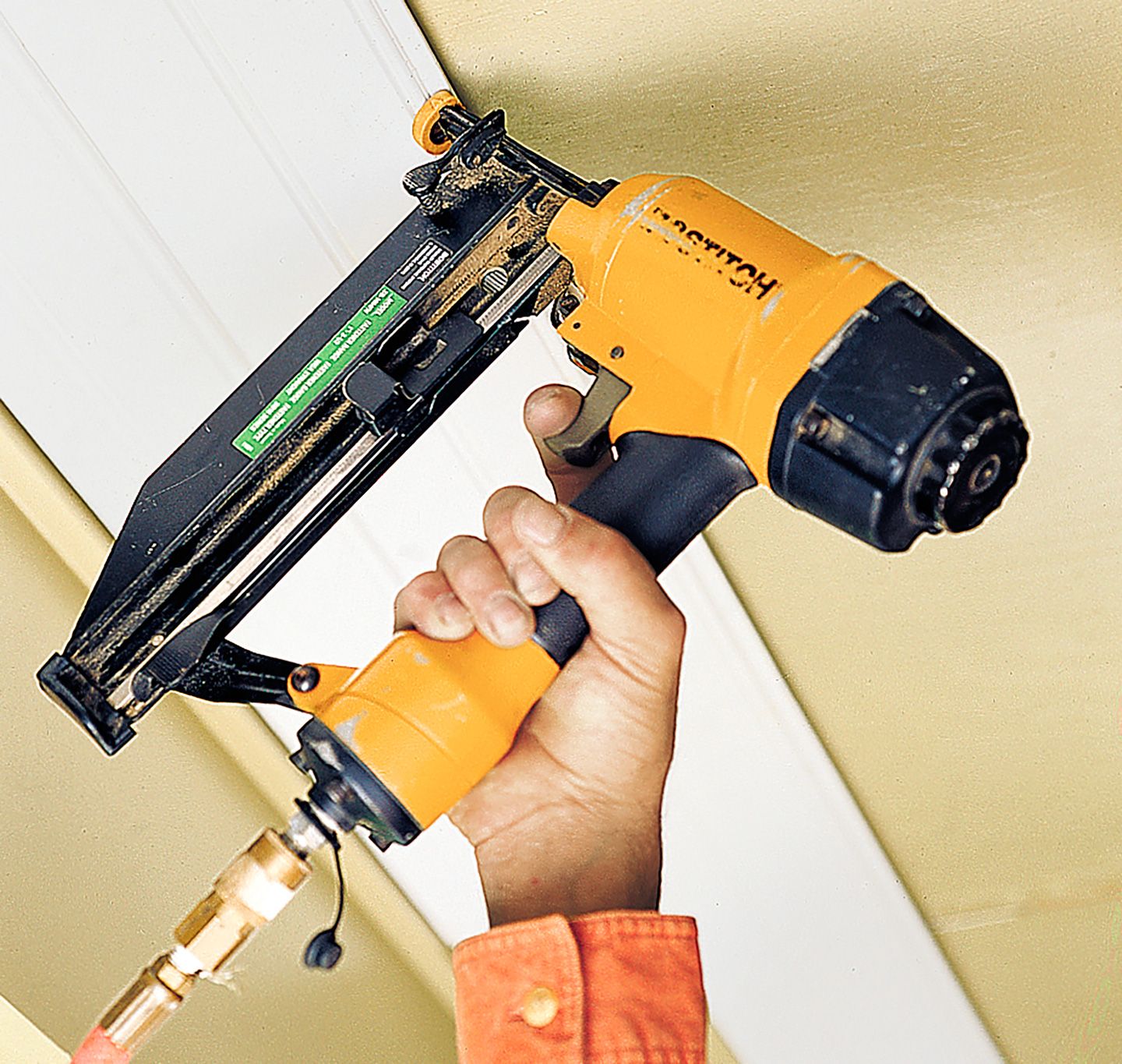
Deciding whether to install wood paneling yourself or hire a professional depends on your skill level, available time, and the complexity of the project. If you’re handy with tools and have experience with home improvement projects, installing wood paneling may be a doable project. Simple designs such as shiplap or beadboard are more DIY-friendly, especially when you’re using pre-fabricated panels.
For complex designs, large spaces, or if you’re working with expensive materials, it’s often best to hire a professional. A pro can ensure proper installation, especially when you’re dealing with issues like uneven walls or intricate patterns.